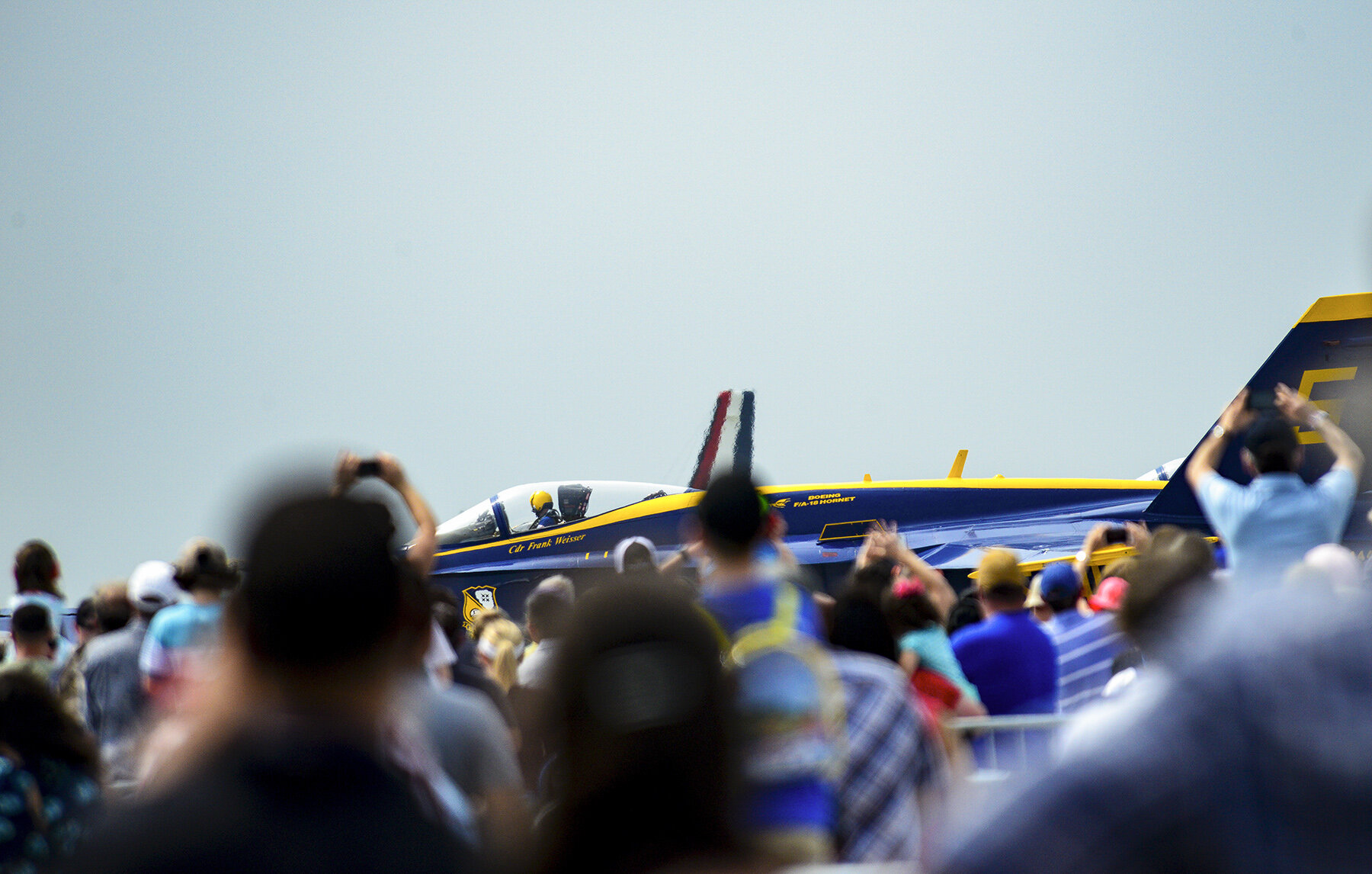Naval Air Show
In 2017 Shirley and I were invited by my nephew, then a U.S. Navy commander, to attend an air show at the Corpus Christi Naval Air Station. I am a regular attendee at the annual air show at Ellington Field near Houston, but this one was going to be special, with a performance by the Blue Angels, the Navy’s flight demonstration team. We had wonderful front row center seats reserved for naval personnel and their guests. I’ve never been much of an action photographer, but I thought I’d give it a try this time.
Air shows usually feature historic airplanes. This is the cockpit and nose of a North American B-25 Mitchell, a workhorse medium bomber of World War II.
A gull-winged Vought F4U Corsair, a fighter plane used heavily by Marines and the Navy in the Pacific theater in World War II. Being allowed to walk among these famous warbirds is one of the real pleasures of air shows.
A peek into the cockpit of a Curtiss SB2C-5 Helldiver, a carrier-based dive bomber from World War II. Until a few years ago, the Commemorative Air Force was named the Confederate Air force. The name was changed for obvious reasons.
The Stearman biplane was used by the United States and several other countries to train military pilots during the 1930s and 1940s. Over 10,000 of them were produced.
A venerable Douglas C-47, the military version of the DC3, one of the most successful airplanes in history.
Provocative nose art on the old transport.
The fighter jet flown by the Blue Angels in 2017—the McDonnell Douglas F/A-18 Hornet. The team is currently (2020) upgrading to a later model, the Boeing F/A-18 Super Hornet.
The Blue Angels lineup. These are not small airplanes.
The flying began with a couple of modern military airplanes. This is a military version of the Boeing 737.
A Bell-Boeing V-22 Osprey. It can land and take off vertically, and when the engines are tilted forward it can achieve speeds of 310 mph.
This U.S. Marines Osprey hovered in front of the air show crowd for several minutes. It was LOUD.
Next came flyovers by the World War II aircraft at the show. This is the Corsair.
The Douglas SBD Dauntless dive bomber, a bedrock of the carrier air fleet in the Pacific.
The Curtiss SB2C Helldiver, a later model navy dive bomber, was intended to replace the older SBD Dauntless. The airplane was difficult to handle and had other performance issues, and pilots did not like it as much as they did the reliable Dauntless. Nevertheless, the Helldiver was used extensively in the later years of the war.
Our old friend, Devil Dog, the B-25. These were the planes that were flown off of a carrier deck in the Doolittle raid on Tokyo early in the war.
This North American T6 Texan has been modified to resemble a Japanese Zero fighter.
The Corsair again—a Zero killer.
The Dauntless and the Helldiver, our two dive bombers, pass each other in the air.
The B-25 in profile is really sleek.
Every air show I’ve attended has included performances by aerobatic pilots. This biplane pilot went first.
The second aerobatic pilot flew a low winged monoplane.
The aerobatic routines are often performed to music and are choreographed to constitute ballets in the sky.
The airplane remained stationary for a few moments, hovering like a helicopter.
Stationary no more.
Air show aficionados come in all genders, shapes, sizes and ages.
Showtime! The pilots man their planes and start their engines…
…then begin to taxi toward the runway. Sit back, scroll down, and enjoy these awesome, beautiful aircraft and their incredibly skilled team of pilots.
The Blue Angels’ finale—a perfect starburst, bringing the air show to a spectacular conclusion..

















































